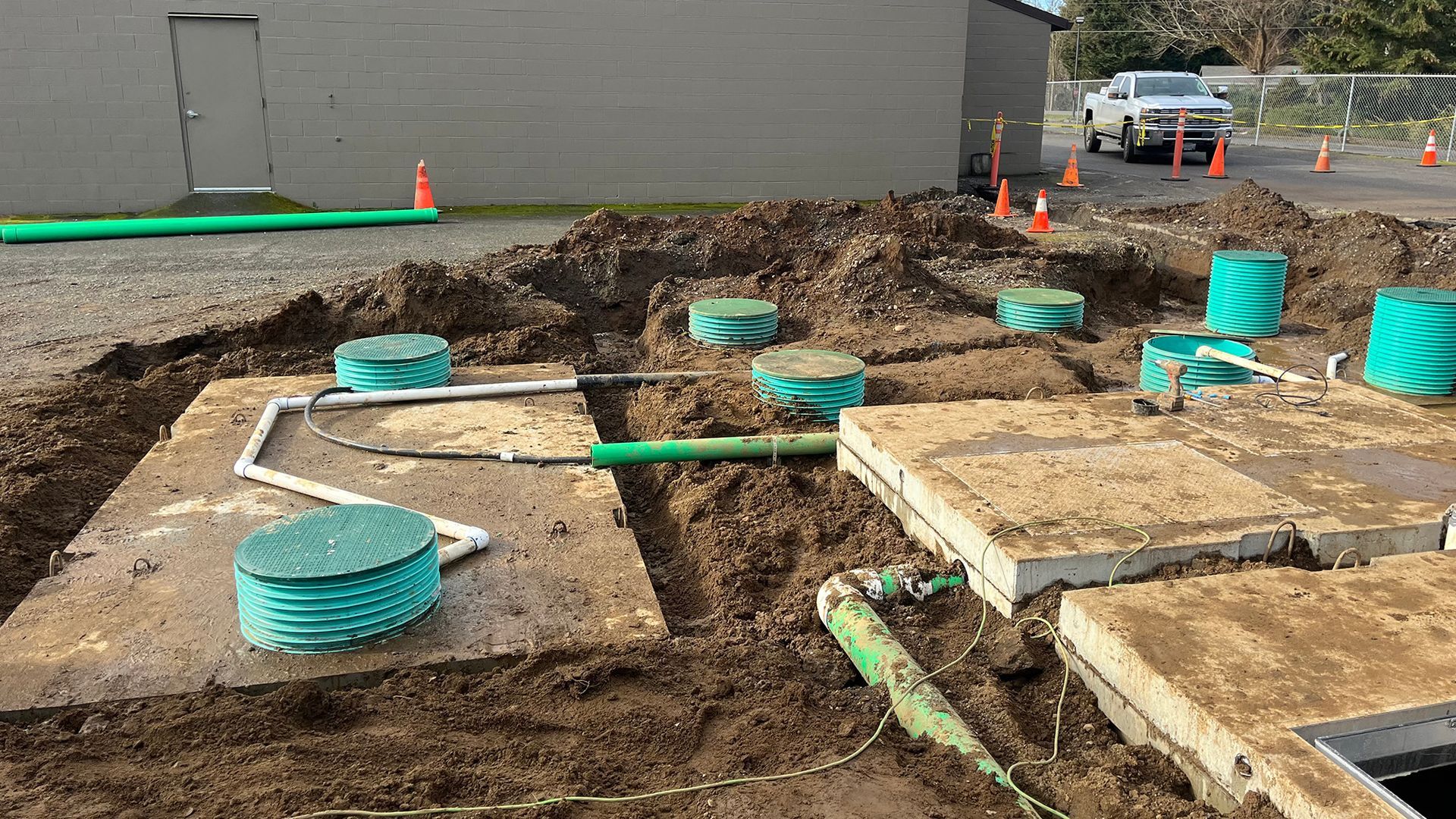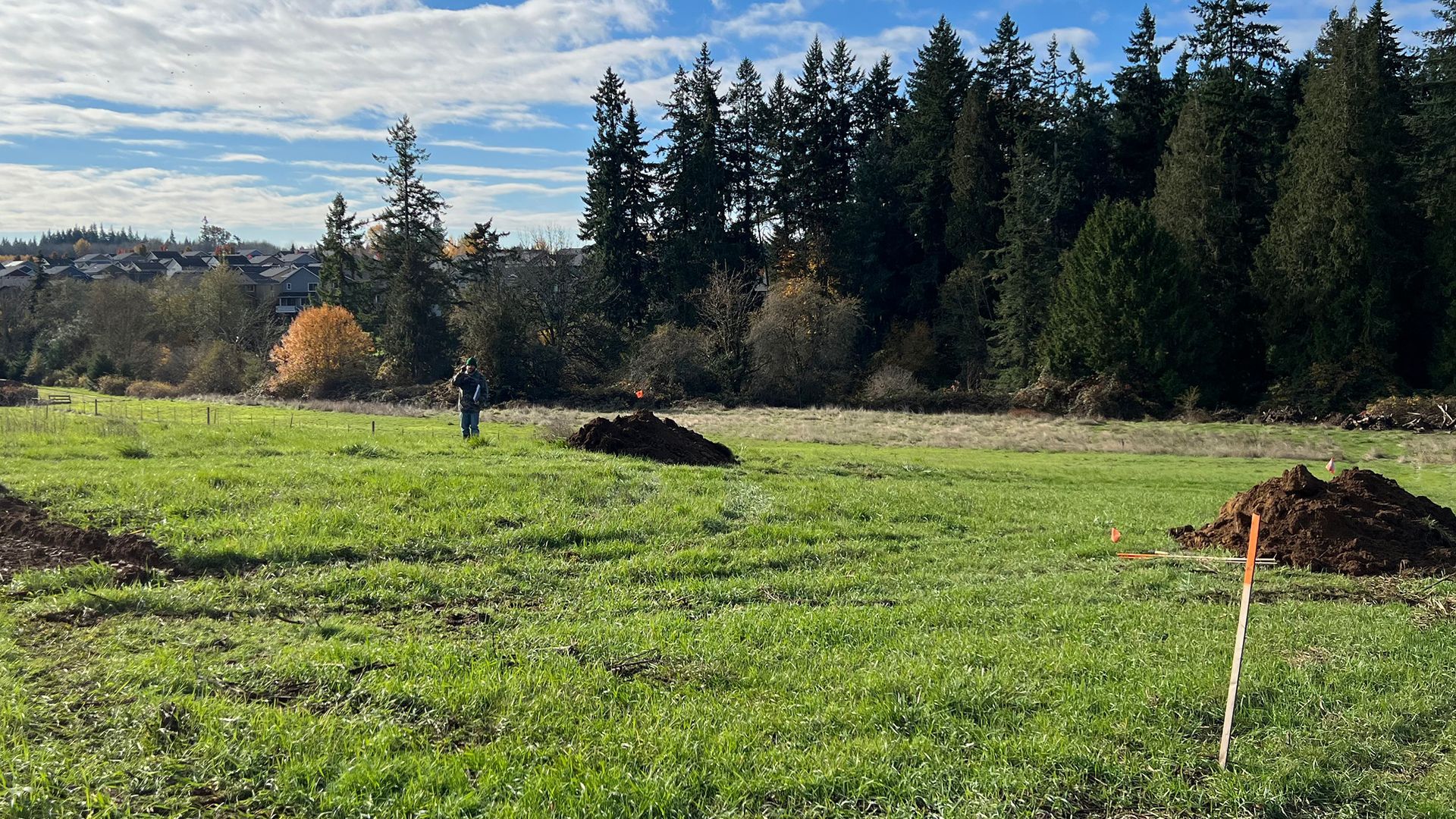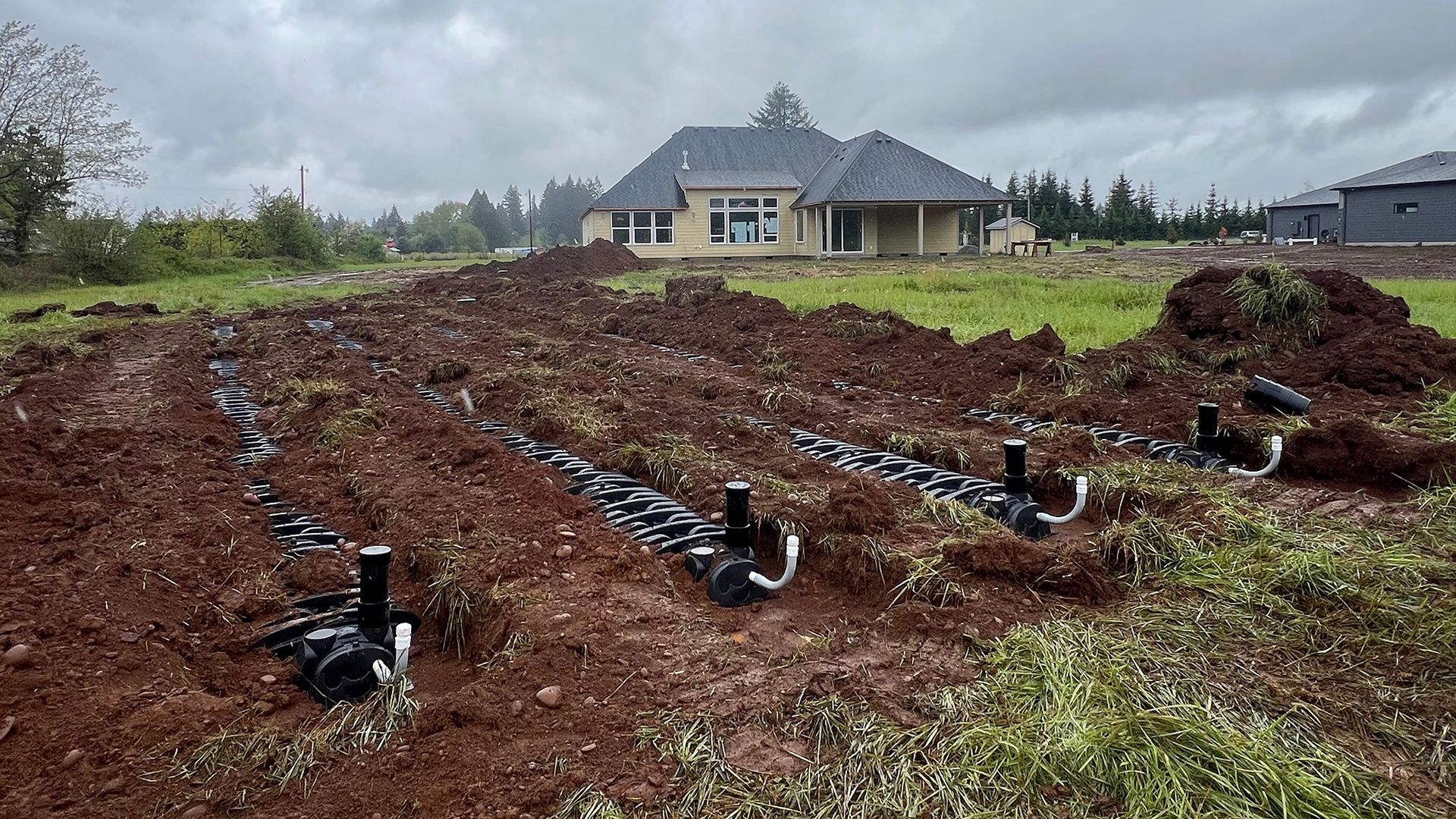McNair Septic
Septic Design & Consulting
McNair Septic Design & Consulting provides expert septic system design, soil evaluations, and consulting services across Clark, Cowlitz, Lewis, Skamania, and Klickitat counties. From Vancouver to Centralia, our family-owned team has the experience and licensing to deliver reliable solutions tailored to your property.
We Handle Every Step of the Permit & Inspection Process
From applications to approvals, we take the stress out of dealing with county paperwork. You can relax knowing we manage all applications, permitting and inspections. This saves you time, confusion, and unnecessary delays.
Lightning-Fast Turnaround – From Bid to Submittal in as little as 14 days
Once you approve our bid, we move fast—submitting for permitting in as little as two weeks. That means your project starts sooner, keeping your plans and timeline on track.
Three Generations of Septic Design Expertise
Our family has been designing septic systems in Washington since the 1970’s. That legacy means decades of hands-on knowledge are built into every design, ensuring you get a system that lasts.
Licensed & Insured for Your Protection
We hold a Washington State On-Site Septic Designer license and carry full insurance, so your project is handled by qualified professionals who meet (and exceed) all state requirements.
4.9-Star Reputation Backed by Hundreds of Happy Customers
Homeowners choose us because we combine creative problem-solving with practical solutions. Unlike other companies, our reviews reflect a consistent track record of designs that fit budgets, meet regulations, and work flawlessly.
Designs for All Manufacturers – Not Just the Ones We Favor
Unlike several of our competitors, we are not owners or distributors of any specific septic systems. This independence ensures our designs are driven solely by what is best for your property—not by product commissions or supplier kickbacks. Our goal is to provide you with the most effective, efficient, and cost-conscious septic solution tailored to your unique needs.
One-Stop for All Septic Design Needs
From site and soil evaluations, perc testing, consulting and designs we provide every design-related service under one roof. You’ll work with a single trusted partner instead of juggling multiple contractors.
Property-Specific Solutions – Never One-Size-Fits-All
Every system we design starts with your property’s unique features, future plans, and long-term needs. This ensures the most efficient, cost-effective, and reliable setup possible.
Transparent Communication from Start to Finish
We keep you informed with clear timelines, updates, and next steps—so you’re never left wondering where your project stands.
Proven Process That Simplifies a Complicated System
We’ve refined our approach over decades to make septic design as simple and stress-free as possible. From your first call to final approval, our process saves you headaches, time, and money.
The Process
Planning
All we need is your parcel number or address to begin. We research your property in advance, gather details about your future plans, and may schedule a site visit or call. Any questions are addressed quickly to keep the process moving.
Soils Evaluation
Most projects start with a soil evaluation (perc test), the first step toward system approval. We handle everything—from digging and testing to county applications, fees, and paperwork—while keeping you updated every step of the way.
On-Site Septic System Design
After completing the soil evaluation, we quickly create a detailed, cost-effective septic design, typically within one to two weeks, that includes all calculations, maps, and specifications, while handling every detail of the submittal process for you.
Review and Permitting
Most counties allow up to three weeks to review septic designs and soil evaluations, though some return them sooner. Once approved, we’ll send you a copy and can also forward it to licensed installers so you can receive system bids.
Taking Care of You
We handle everything—even the required county as-built map—so your septic system is approved and recorded. With no complex contracts, we start right away and keep things moving. Consultations are always free, so call us anytime.
Support
We can assist you in finding reputable septic installation and maintenance companies that can service and maintain your new system.
Customer Reviews
Our Services
More Than Just Septic Design
Beyond design, McNair Septic provides complete septic consulting, soil evaluations, and perc testing services. Whether you’re planning a new build or addressing challenges on an existing property, we’re your one-stop partner for everything related to septic systems in Southwest Washington.
Fast Septic Design in Clark, Cowlitz, Lewis, Skamania, and Klickitat County
One of the biggest frustrations homeowners face is waiting on approvals. At McNair Septic, we pride ourselves on lightning-fast turnaround — moving from bid to submittal in as little as 14 days. That means your project stays on schedule, whether you’re building in Vancouver, Longview, or Centralia.
Trusted Septic Consulting in Clark, Cowlitz, and Lewis County
With three generations of experience, our septic consulting service ensures your system is not only compliant but also designed to last. We blend decades of hands-on expertise with modern technology to solve challenges unique to properties in Battle Ground, Washougal, and Castle Rock.
Frequently Asked Questions
How long does the septic design process take?
In most cases, once you approve our bid, we can submit your design for permitting in as little as 14 days.
Do you perform perc tests and soil evaluations?
Yes. We handle all site and soil evaluations, including perc testing, and submit the necessary reports directly to the county.
What types of septic systems do you design?
We design all system types, including gravity, pressure distribution, mound, sand filter, aerobic, subsurface drip, Glendon pods, and OSCAR II systems.
Can you help with county permitting?
Absolutely. We take care of all applications, fees, paperwork, and inspection coordination with Clark, Cowlitz, and Lewis county health departments.
Do you only work with certain septic manufacturers?
No. Unlike some competitors, we are independent and design for all approved system types and manufacturers—ensuring the best fit for your property.





